5 Most Popular Japanese Crafts and Where to Find Them
Japanese traditional art is one of the most popular reasons people are drawn to the country. Japan has a long history of making arts and crafts, and the superior level of Japanese craftsmanship is well-known all over the world. There are so many forms of arts and crafts, and the production areas are located throughout the country. In this blog, we will introduce you to the 6 most prominent forms of Japanese crafts and our favourite places to find them.
1: Textile
Japanese fabric is very popular among international travellers, especially vintage kimono fabrics. There are two main types of kimono fabric, dyed (Atozome in Japanese meaning “dyed after”) and woven (Sakizome in Japanese meaning “dyed first”). The dyed kimono is made by dyeing woven white fabric using multiple processes such as stencil dyeing, hand-painting, embroidery, and gold leaf processing. The patterns can be simple like in komon, which is repetitive stencil-dyed fabric, or gorgeous hand-painted ones with many colours and motifs such as yuzen and shibori. You can see great examples of yuzen at Kaga-Yuzen Kimono Centre in Kanazawa. Itchiku Kubota Art Museum in Kawaguchiko is our favourite where you can see works of internationally acclaimed kimono artist, Itchiku Kubota, a superb collection of kimonos made using shibori, or tie-dyeing techniques.
A woven kimono is made by dyeing white threads first and then weaving. It can be woven with a single colour of yarn (like indigo), or with yarn dyed in multiple colours to produce a pattern. The pattern and colours of the finished kimono are decided in advance at the designing stage, and a precise blueprint is drawn into a plotting paper (it is computerised these days). It is a very labour-intensive weaving process that requires highly skilled craftsmen. There are some areas in Japan known for a particular style of weaving such as Nishijin-ori in Kyoto, kasuri in Kurume (in Fukuoka), tsumugi in Oshima (in Kagoshima) and Yuki (in Ibaraki), or Hakata-ori in Fukuoka.
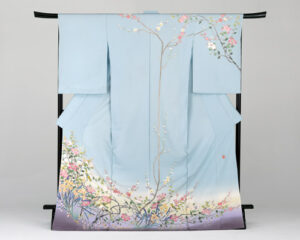
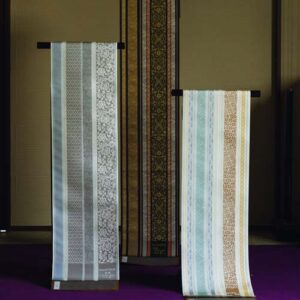
2: Ceramics
Ceramics are perhaps the first craft people think of when it comes to traditional Japanese art. The history of earthenware in Japan goes as far back as the Jomon period (c. 14,000 to 300 BC). With the introduction of more advanced technologies from the Asian continent from the 5th century onwards, Japanese pottery developed from simple clay pots to hold water and food, to more decorative items using different colours of glazing.
It was in the 16th century when the original Japanese styles of ceramics prospered especially with the rise in popularity by tea ceremony practitioners. Since then, a large volume of pottery has been produced in areas such as Seto (Aichi prefecture), Mino (today’s southern Gifu), Bizen (today’s Okayama), Shigaraki (today’s Shiga), Tanba (today’s Kyoto) and Karatsu (in Saga).
On the other hand, porcelain was first produced in Arita (in Saga prefecture) in the 17th century for the first time in Japan with the arrival of craftsmen from Korea and the discovery of kaolin in the area. From the mid-17th century, the Dutch East India Company exported large quantities of porcelain ware from Arita to buyers throughout the world, mainly in Europe. Arita porcelain became known for its finely painted, vivid decorations in indigo blue, red, yellow, and gold. Arita’s techniques and traditions have been carried on for over 400 years, and even today it is beloved by pottery fans the world over.
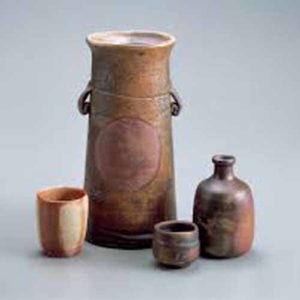
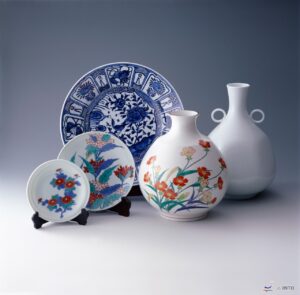
3: Timber crafts
You can expect to see so many different types of wood crafts in Japan, and some representative ones are explained below.
Yosegi
Yosegi is a traditional Japanese marquetry technique created using fine oblong rods of wood to show their grain, texture and colour, making an intricate surface pattern. You can see great samples of yosegi products and demonstrations at Maruyama Bussan and Honma Yosegi Museum in Hakone.
Magemono
Magemono or bentwood work is made from thin sheets of Japanese cedar or cypress softened in hot water. This allows them to be “bent” or shaped into cylinders or ovals, turning them into food containers such as rice bowls and lunch boxes. Cedar and cypress wood are ideal because of their flexibility, and heat and moisture retention properties. The wood also has antiseptic qualities, making it ideal for food storage. Famous magemono-producing areas are Odate in Akita prefecture and Hakata in Fukuoka prefecture.
Kumiko
Kumiko requires highly skilled artisans to create. Mostly used for sliding doors, shoji screens and dividers; numerous, thin slit wooden pieces are intersected and laid down individually to form decorative designs with no nails or metal used. Based on a combination of horizontal and vertical lines, grids are fitted into frames. Skilled practitioners assemble the pieces to an accuracy of 0.1mm. Kuimiko is widely produced in northern Honshu (Tohoku) but can be seen in other areas such as Okawa in Fukuoka.
Wood carving
You can see amazing wood carving craftsmanship and meet carvers in Inami in Toyama prefecture. There is a museum, Inami Sculpture General Hall, and also Zuisenji Temple, a working temple, showcasing the skills of Inami artisans. Apart from the temples, Japanese wood carvings are often used for “ranma” (the Japanese name for door transoms), door panels and other fittings in Japanese architecture.
Bamboo crafts
Among many production areas of bamboo crafts in Japan, perhaps the most famous one is Beppu in Oita prefecture. The bamboo industry flourished in Beppu in the Edo period (1603-1868) due to good access to abundant Madake bamboo in the area. In 1902 the government established a specialist training college for bamboo crafts, and this enabled Beppu to produce many excellent bamboo artisans including some living treasures such as Shono Shounsai. Beppu bamboo craft is designated a “traditional craft” by the Ministry of Economy, Trade and Industry.
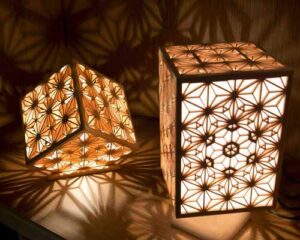
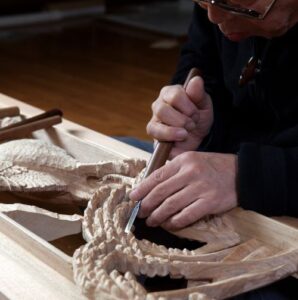
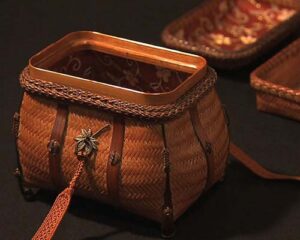
4: Knives and swords
Sword-making tradition led Japan to produce excellent knives and cutting tools. Today the main production areas include Seki in Gifu prefecture, Sanjo in Niigata prefecture, Sakai in Osaka prefecture, Echizen in Fukui prefecture and Kochi in Shikoku. Each of these places has great museums to showcase their local products such as Seki Traditional Swordsmith Museum, and Seki Hamono Museum. You can also visit factories to witness how the world’s best kitchen knives are made. Apart from visiting production sites, shopping for knives together with all sorts of other kitchen utensils at Doguyasuji in Osaka or Kappabashi in Tokyo is great fun.
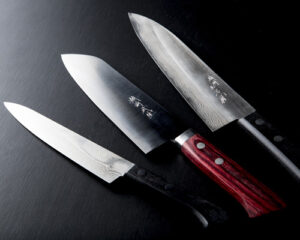
5: Washi paper
There are several theories about when washi-making started in Japan. One theory is that paper-making technology was brought to Japan by monks in the 4th to 5th centuries, but there is much evidence that paper had been made using indigenous methods in some parts of Japan before that. Today, the craftsmanship of Japanese hand-made paper is designated UNESCO Intangible Cultural Heritage. There are many washi production sites throughout Japan, and you can often participate in washi-making workshops to make your own piece of beautiful paper.
Journey to the East runs many Small Group Tours that visit some of the production sites of traditional crafts mentioned above, including our specialist craft tour, Artisan Tour of Kyushu, Japan ( you can see the video about the tour below) and Craft and Cherry Blossom Tour of Sea of Japan Coast. We will also help those travellers who want to visit these places on a private tour or an extension after the group tour. Please feel free to talk to us about your interests in Japanese arts and crafts.
Written by Yuki Takano
Director of Journey to the East Pty Ltd.
Yuki founded Journey to the East, a tour operator specialising in tours to Japan with her husband Col in 2013. Yuki travels to Japan regularly for her research and creates unique tours for the guests.
Ref:
The Museum of Oriental Ceramics, Osaka (https://www.moco.or.jp/intro/history_c/japan.php).
Japan Wood Craft Association (https://japanwoodcraftassociation.com/traditions/techniques/yosegi/).
Inami Japan (https://inamijapan.com/en_index.html).
Beppu Bamboo Craft (https://www.beppu-take-kumiai.com/index.htm).
UNESCO Intangible Cultural Heritage (https://ich.unesco.org/en/RL/washi-craftsmanship-of-traditional-japanese-hand-made-paper-01001).